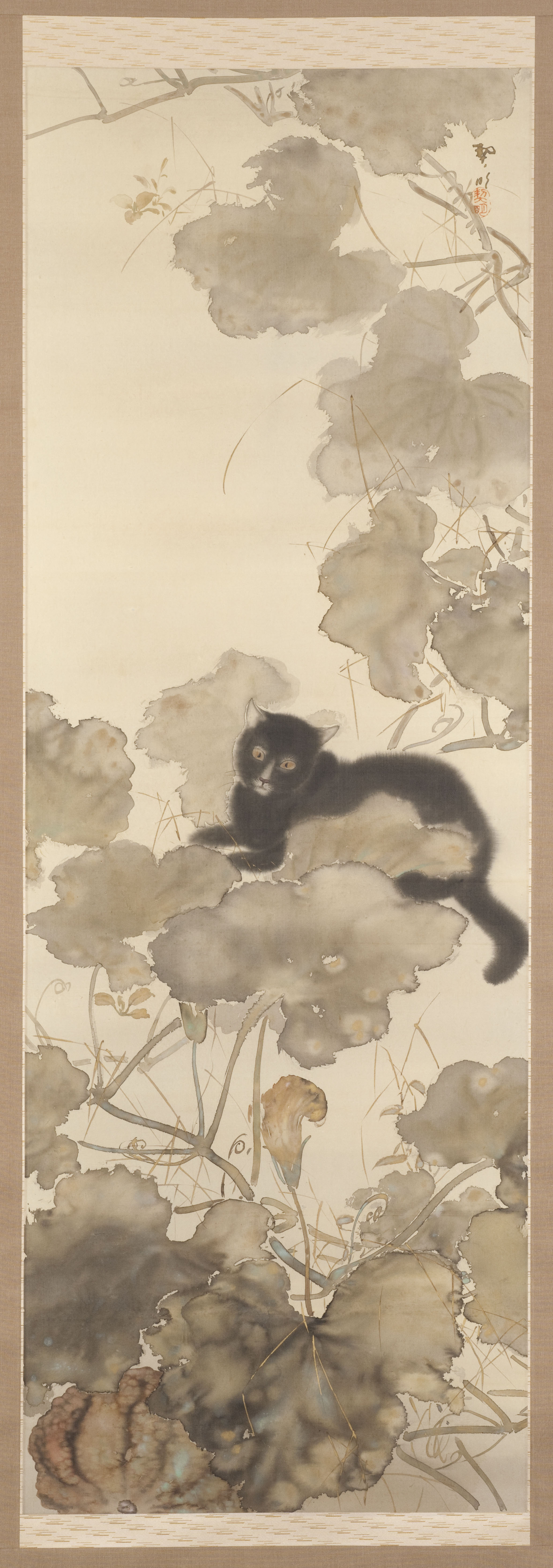
Chat dans un champ de melons
Encre
Peinture
Achat
M.C. 2013-1
This vertical scroll painting, titled Cat in a Melon Field, was executed by Sano Kōsui. The work is signed and sealed in the name of Keimei, one of the artist’s pseudonyms. A black cat with golden eyes lies among melon leaves, whose tendrils extend into the upper part of the painting, creating an effect of depth.
The vine theme, very popular in the Rinpa painting school, is often associated with a month or a season (Ipomoea symbolises the month of June, melon, August, vine, autumn). These motifs became a central theme in 19th-century painting, notably in Japanese prints (particularly in the work of Utagawa Toyokuni) and were adopted by the Nihonga artists in the late 19th and 20th centuries. The painting of Sano Kōsui represents the transition between traditional and modern Japanese painting. It uses the tarashikomi process (developed in the 16th century) together with gold washes. This technique consisted in applying coloured pigments or ink on a dampened surface to obtain a bleeding of the colours. These irregular hues create volume and add a realistic touch. The result is difficult to control, because it depends entirely on the degree of absorption of the ink and the colours by the surface. Generally used on paper, it was here applied to silk, requiring great mastery. The blurred effect, visible in the cat’s fur and the jagged leaves, is also reminiscent of the traditional Chinese “boneless” painting technique (without a line of ink defining the contours). Only the thin vine stems are edged with a coloured line.
Sano Kōsui (pseudonyms: Keimei, Deigyû, Kōrin) was a native of Nagano prefecture. He settled in Kyōto in 1914, where he studied under Kikuchi Keigetsu (1879-1955), an artist of the realist Shijō school of painting. Working with Tomita Keisen (1879-1936) he adopted the innovative techniques of traditional Japanese painting (commonly known as Nihonga). After a brief sojourn in Kōbe, he returned to Kyōto in 1928, where he continued to paint, specialising in animal painting. He was very favourably received at the Imperial Exhibitions (Teiten) and at the Exhibition of Traditional Art (Inten).
